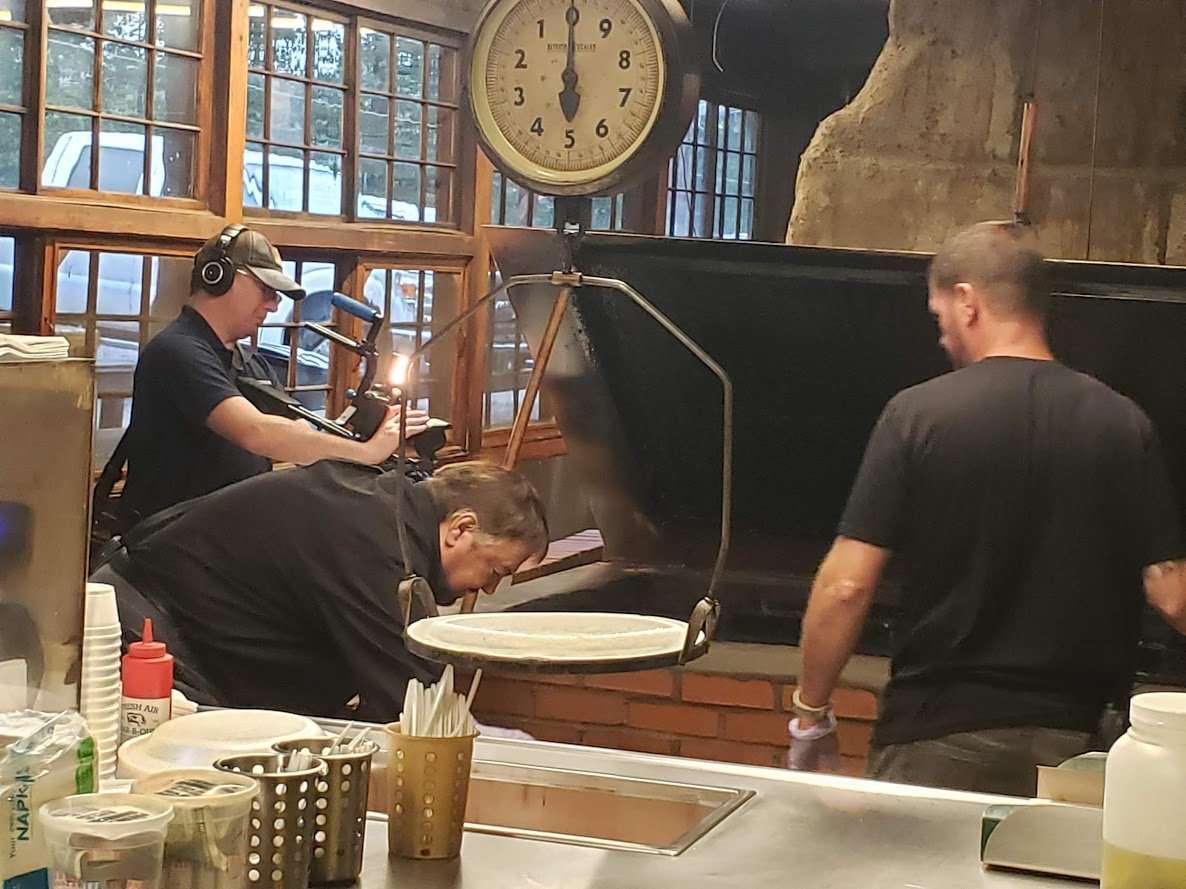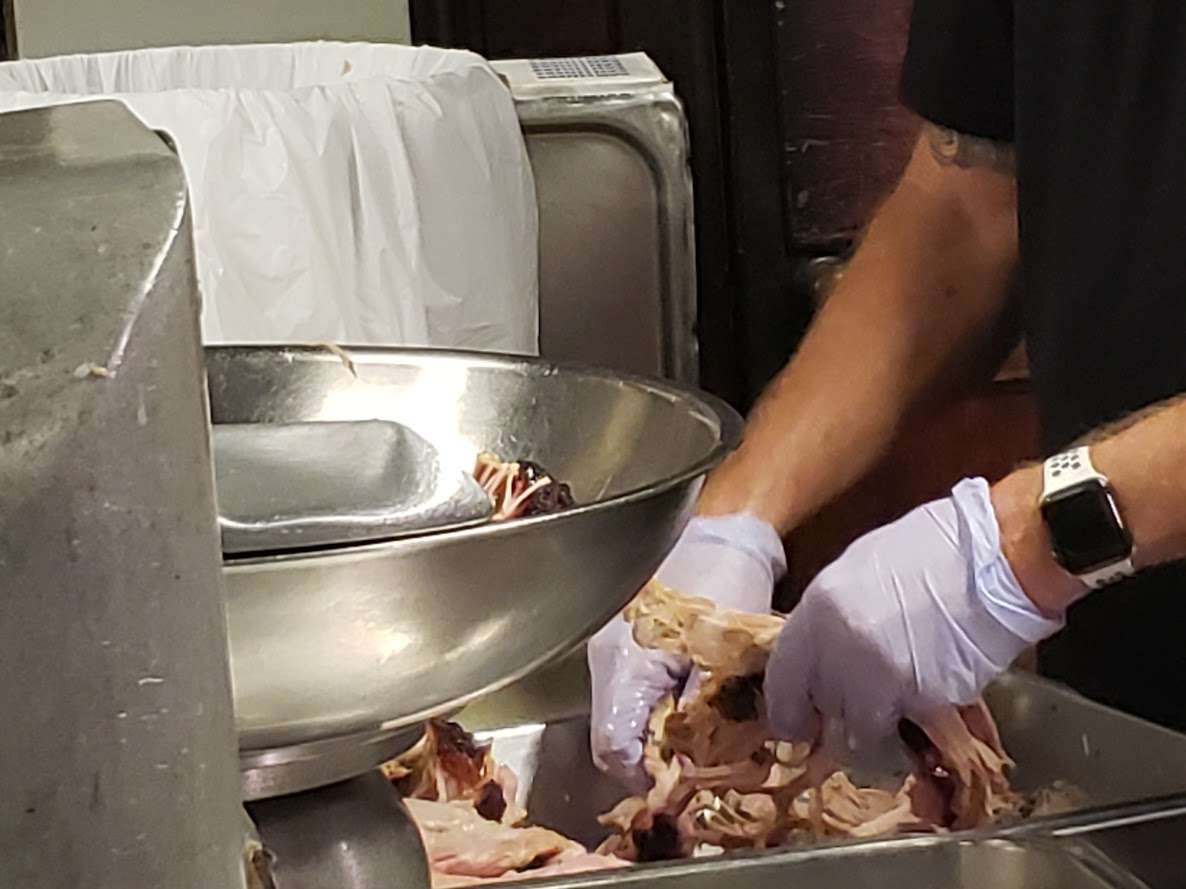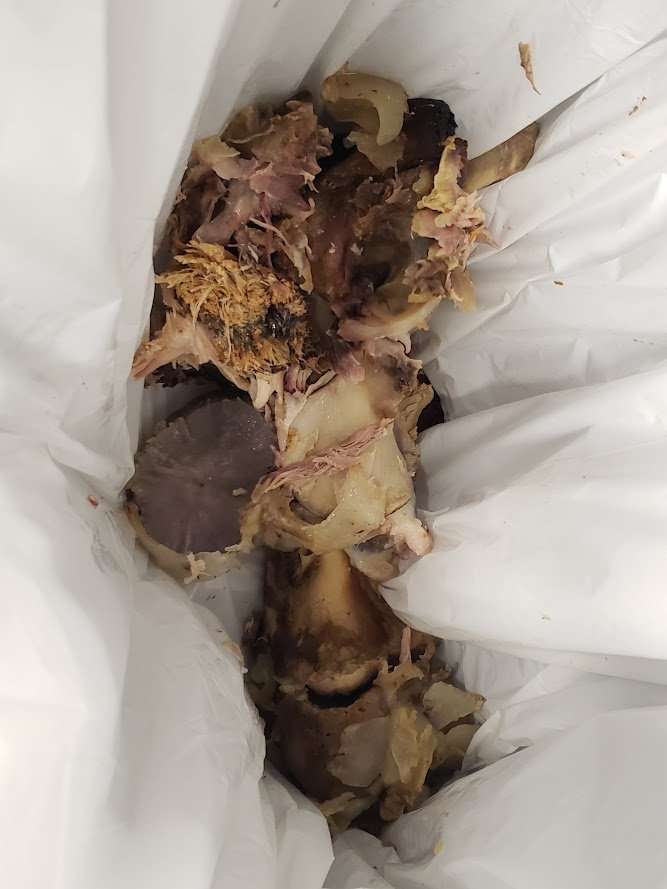We entered the belly of the beast. Embers were burning and the flame was so hot you couldn’t get near it. Never mind the smoke that filled the air and was so thick you could taste it. Were we in the abode of the damned? You would think so, but we were not.


Long ago and far away, between 780,000 and 1.8 million years ago, our ancestors Homo erectus discovered cooking meat over an open fire. Today we call it barbecue.
Time for a science lesson. There are two ways to cook barbecue, one using direct heat and the other indirect heat. In the direct heat method, the meat is cooked directly over wood or coals, similar to grilling. The indirect method uses smoke from a fire away from the wood or coals and cooks at low temperatures for a much longer time.
Where The Food Comes From visited Fresh Air Barbecue in Jackson, GA on July 10 to see first-hand how they make their incredible pulled pork, Brunswick Stew, and coleslaw. What makes Fresh Air so special is they’re still cooking with actual fire — not the kind where you just push a button or add some charcoal. Talk about perfection! All the more amazing Fresh Air, has been doing this since 1929.


Chip’s first interview took place with pit operator Shane Watson. Shane never stopped long enough for me to get a good picture – you can tell by the slightly blurry one – and if I tried, I would have gotten in the way of the cameras. But even during his hustle and bustle he gave us great information about the process of smoking meat.

Chip Lifting Pork Into The Smoker

Pork In Smoker
In the above pictures, what Shane is doing is cleaning out the ashes from the firepit, which he does every day. I just call it dirty work. He went onto explain the wood used to smoke the pork is a blend of white oak, pecan, and hickory, and the average weight of the pork — all lean, whole hams — is 18–20 pounds. The hams go in the pit in the morning — that’s what’s happening in the second set of pics — and come out the next morning.
There is one story Shane told that really sticks in my mind. Apparently, a tornado came through Jackson and destroyed much of Fresh Air’s wood supply. The neighbors around Fresh Air rallied and donated wood of their own. Southern hospitality and neighborliness at its finest.


When the pork is done the process of pulling off the meat begins. Shane manually pulls off the muscles, bones, and connective tissue. Ok, may be a little too much information, but this is where my heart totally broke: As Shane was pulling the meat off, he was throwing out huge ham hocks. The biggest I have ever seen. I about died! My family and I cook the majority of our soups, beans and peas with ham hock. And if you cook with ham hocks you know how expensive they are.
Ham hocks are like gold to me so I had to ask, “What do you do with the bones and ham hocks?” Actually, they do a very nice thing. Once a week the local animal shelter picks them up to help feed the dogs. But it did not make me feel any better. Side note: Chip and I stopped to eat a few months later at Fresh Air for lunch. Co-owner David Barber was there. I told him my heartbreaking story about the ham hocks. He was so sweet. He told me to call ahead when we are in the area and he will save them for me. How great is that!


I have to admit, barbecue is not really my favorite food. But the Brunswick Stew is a whole different story. Unfortunately for me they had made the stew the day before and I did not get to see the process. If I had I would have attempted to write down the recipe. I have tasted a lot of Brunswick Stew and I can honestly say Fresh Air’s version is the absolute best.
What’s the story behind the stew? The recipe was perfected in the early 1950s by David and co-owner and brother George Barber’s great grandfather. He figured out the perfect combination of lean beef, corn, onions, and Idaho potatoes and it has not changed since then. One more thing about the stew: It’s so popular there’s a special log cabin solely dedicated to cooking 80 gallons per week. Can you tell I’m hooked?

David and George Barber


Chip and Charles Barber
Up next was an interview with David and George, third generation owners. They provided so much information about the history behind Fresh Air Barbecue that I am only going to give a few highlights. Fresh Air was started by Dr. Joel Watkins in 1929. Dr. Watkins died in 1945 and George W. “Toots” Caston, the manager of Fresh Air, bought it out. It was Toots who created the design of the pit using the indirect method of smoking and turned Fresh Air to what it is today. Not only did he refine the cooking process, he also improved the Brunswick Stew recipe (thank you Toots!) created their sauce recipes, and started in-house dining. Fun fact: The main ingredient in barbecue sauces famously vary state-by-state. Georgia’s is tomato- and vinegar-based in comparison to, say, South Carolina’s being mustard.
Ironically, Toots did not want George and David to follow in his footsteps. He believed they should pursue their own dreams. But I guess once barbecue is in your blood it’s there for life. Just ask the up and coming fourth generation manager Charles Barber, David’s son. Charles told Chip he liked coming back to his roots and experiencing his family’s history — in fact, he left a career as a college professor to come home.
Where The Food Comes From has not featured restaurants often. So why now? It’s all because of Chip. Chip’s passion for barbecue, especially Fresh Air, is – I can’t even think of a word – completely over the top. It’s like a kid anticipating Christmas Day who prayed and got that extra-special present. And when they did it brought tears to their eyes. Well, this is Chip to a tee when it comes to Fresh Air Barbecue and getting a chance to tell this story. Folks, I am not kidding about the tears in his eyes. The first time he went to Fresh Air he was a baby — and he keeps coming back. I hope he won’t cry every time. But this time, we all understood.


